FORT CAMPBELL, Kentucky — Roughly 200 Airborne Infantry Soldiers of the 101st Airborne Division (Air Assault) are running the Next Generation Squad Weapon (NGSW) system through its paces here from Sept. 1 to Oct. 30.
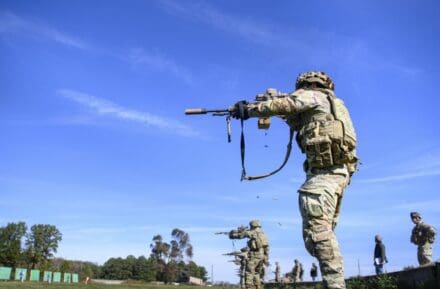
Soldiers from Alpha and Bravo Company, 1st Battalion, 506th Infantry Regiment are taking part in an operational assessment (OA) featuring a range of weapon configurations, force-on-force engagements and static live-fire ranges.
It is a key step in modernizing the combat force and aims to impact over 120,000 U.S. Army Soldiers, according to Mr. Elbert L. Grayson, Supervisory Military Test Plans Analyst, Maneuver Test Directorate, U.S. Army Operational Test Command.
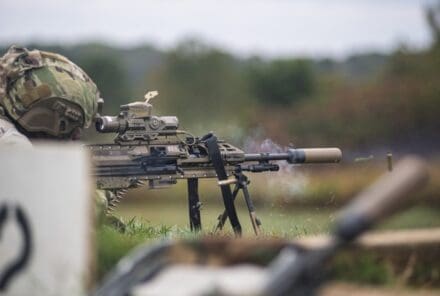
“The Army needs equipment to continually evolve, to meet the threat of our adversaries,” said Grayson.
The NGSW system will be the next stage in that evolution.
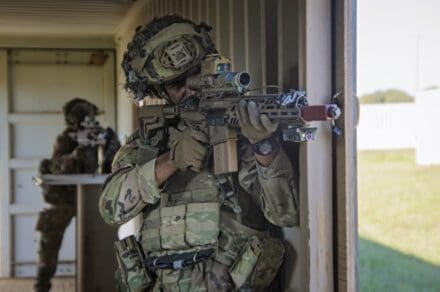
“Information is needed to make improvements to the NGSW that will benefit America’s most precious resource, our Soldiers,” Grayson added.
The new weapon system is slated to replace the M4 carbine and M249 squad automatic weapons, representing a significant advancement in firepower, range and accuracy.
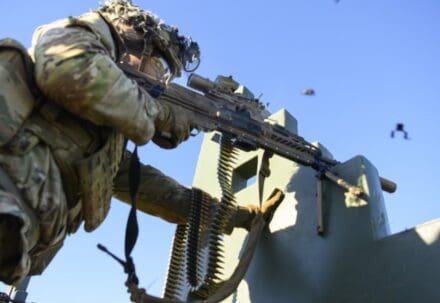
“Having seen the capabilities of the 6.8 [mm] round, I have confidence that it will easily do in one to two rounds, what the 5.56 [mm] did in two to four,” said Capt. John M. Green, Commander of A-CO, 1-506th, 101st ABN DIV.
Direct feedback from U.S. Army Soldiers provides invaluable insight to ensure future warfighters receive the best possible equipment when it matters most.
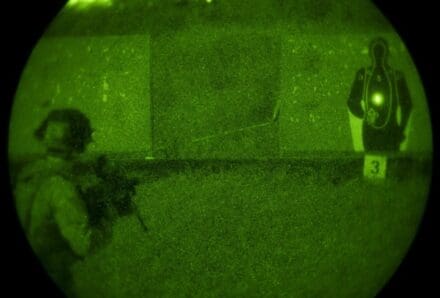
“The force on force is really exciting, really fun, getting in there and doing training against human beings, not just targets, and actually squaring off [against another] unit making plans and objectives, I think it is a really good training experience for sure,” explained Sgt. Todd Smallwood, First Squad Team Leader, A-CO, 1-506th, 101st ABN DIV.
According to Grayson, the NGSW testing is being conducted under the most rigorous conditions to simulate real combat and ensure that the weapon can meet the demand of future conflicts.
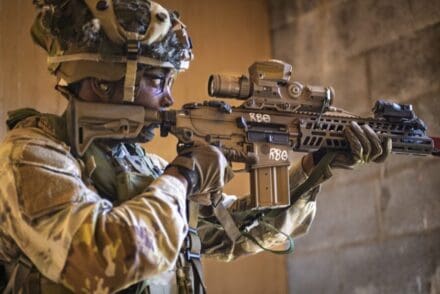
“We have been doing the operational assessment on the NGSW weapons, the XM7, the XM250, and also with the XM157 scopes on the weapon systems,” said Smallwood. “We’ve been doing quite a bit of ranges, and pop-up targets, trying to recreate platoon assault objectives.”
Besides standard training environments, the operational assessment was designed to simulate combat as closely as possible.
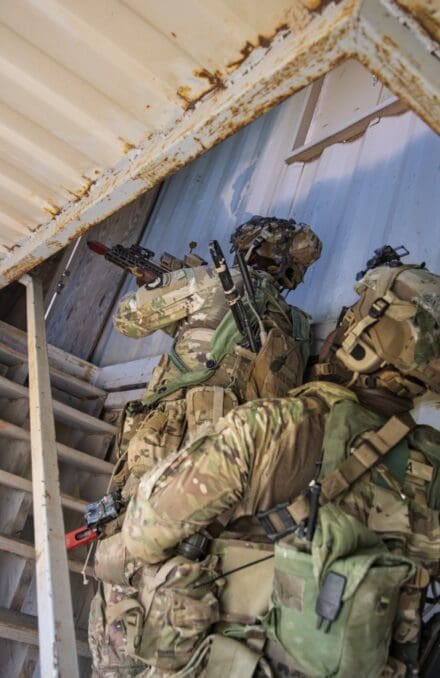
“The capability of the [6.8mm] round being able to puncture and turn cover into concealment, I think it will make a huge difference in urban and forest environments,” said Smallwood.
Soldiers were challenged to perform individual movement techniques (IMT) while engaging targets up to 300 meters away. This IMT lane requires Soldiers to bound, low-crawl, and high-crawl while maintaining accurate fire, ensuring that the weapon performed reliably under strenuous conditions.
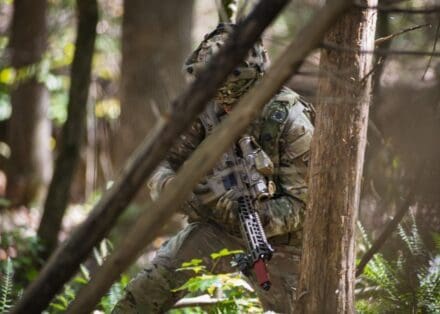
They had to complete the course while under simulated combat stress, pushing their physical and mental limits.
“We did 72 hours of force-on-force (FOF), urban rifle marksmanship (URM), and we’re going to finish with a stress shoot,” said 1st Sgt. Barron C. Garrard, First Sergeant of A-CO, 1-506th, 101st ABN DIV. “I think it [the NGSW] will change daily life in the way that we fight.”
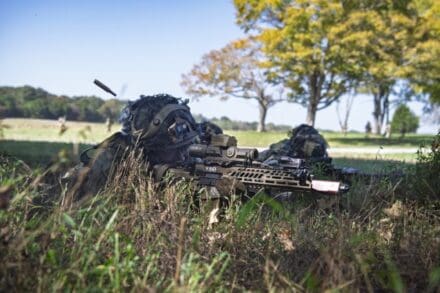
In preparation for future operational environments, Soldiers also tested the NGSW in simulated chemical, biologic, radiological, and nuclear (CBRN) environments.
“I like the fact that the testing of equipment has a possible impact on the next generation Soldiers that will be using it,” said Grayson. “My son is a Soldier that may use equipment that I have had a part in testing, so I’m motivated to provide the most accurate data for Army leadership to make the most informed acquisition decision.”
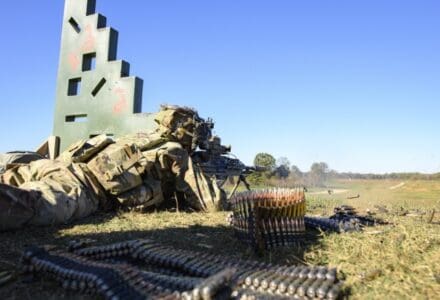
This critical aspect of the assessment ensured that the weapon system can be operated even in the aftermath of a chemical, nuclear or biological environment.
“The NGSW’s advanced capabilities and comprehensive training program will significantly enhance the lethality and survivability of our troops,& ensuring they are prepared for the challenges of future combat operations,” said Mr. Troy , Test Officer in Charge with MTD. “The 6.8mm round offers superior ballistic performance and the NGSW overall represents a significant leap in lethality.
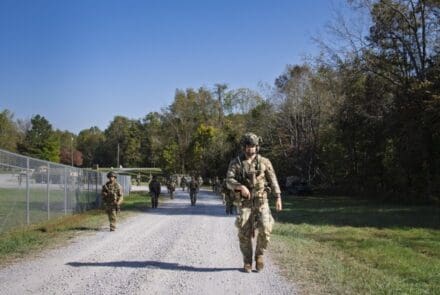
“I feel privileged to be part of this transformative period for the Army,” Willey continued. “Working with the Soldiers who are assigned this system during the assessment is an absolute honor.”
By Mr. Thomas Mort, Audio Visual Specialist, and Maj. Thomas Lorenson, Senior Test and Evaluation Officer, Maneuver Test Directorate, U.S. Army Operational Test Command


Did the force on force exercise have the OPFOR using 556 weapons where the individual rifleman is carrying 210rds of ammo in 30rd magazines giving them superior suppression capability to guys carrying 120rds in 20rd mags? Did it occur in an urban cluster where the majority of future combat is predicted to occur, making the long range advantage of the 21st century battle rifle obsolete? This is an awesome rifle and ammo technology. Have yet to hear any intelligent argument how it will revive the battle rifle as superior on the modern battle field.
Where are you getting that loadout for the M7? In the third picture the rifleman appears to have one mag in the rifle, a triple shingle across his carrier, and two mags on each side of his body in pouches. Literature on the fielding says loadout will be seven magazines, but some imagery seems to indicate troops carrying more that that.
Yeah, troops have always have the option of carrying more ammo than the “standard” load. Why wouldn’t you?
The pacing threat is modern ceramic armor. We will do what we always have and carry more shit. The weight isn’t the issue.
Weight isn’t an issue…
Obviously someone who has never been in the field for duration or has ever talked to someone who has.
85lbs of light weight gear.
The VA has determined your back and knee problems are not service related.
We’ve been fielding ESAPIs for 20 years now, yet no one’s felt the need to bring back magnum’d battle rifles. Almost as if there are numerous better options that don’t throw away the benefits of the SCHV concept.
There will always be urban battles, but that doesn’t mean future warfare is limited to urban. Our earth is still, the vast majority, non-urban. And we’re not just talking about focusing only on the past in Afghanistan. Have you seen the vast distances of engagements in the Sahel? Or on the tundra above the arctic circle? Just two examples, but there are many more regions around the world that are wide open.
But even in urban environments, 6.8×51 is superior at destroying/penetrating cinderblocks and bricks. For the XM7 this isn’t as much of a benefit, but it absolutely is for the XM250.
All that said, the M4 still has a place, even within infantry line companies. It should be an option to choose one or the other depending on the OE. Mission dictates and all that. Leaders, grenadiers, enablers like RTOs/mine sweepers, and attached elements like medics should also still carry the M4.
Or we can just not do that and instead only have one general issue round. There’s no legit reason to have multiple general issue weapons that use different rounds.
Yeah, because we don’t currently carry both 5.56 and 7.62….
Oh wait, M240Bs, M110A1s, Mk48s. We do, even conventional infantry line platoons. Supplanting 7.62 with 6.8 is the intent.
Having ONLY one caliber is a silly goal. The U.S. military is not a guerrilla force with minimal supplies.
Sorry but this sounds like buncombe.
First the question of “superior suppression” based purely on magazine size misses that both also have LMGs the M250 and M249 with similar belt size. Farther it give an estimated assumption on total ammunition capacity which creates the question, is this about how much ammunition you think can be dumped? If that’s the case then after an engagement you might as well turn in the weapons for replacement. Because in either system the M4A1 or M7, M249 or M250 you are cooking the barrel.
Yes combat where sustained fire does happen from time to time but it’s not that common in infantry battles.
This also assumes that all urban battles are by definition CQB. Inside clearing of buildings yes. However anyone who has read of the fighting in Iraq should be aware of the Rise of the DMR and use of Snipers that took place. Anyone who read history of urban conflict knows that longer engagement beyond 400m has taken place in urban conflicts. Cities are man made mixed terrain. Farther we have seen in Iraq, Syria, Ukraine substantial use of snipers and ranged weapons.
Isn’t establishing fire superiority a core tenet of breaking ambushes? Seems kinda hard to do if your enemy can throw out a greater volume of fire than you. Can’t help but think of the early Vietnam days where M-14 armed infantry were getting outgunned by AK & SKS armed guerrillas.
WRT distance, you don’t need a magnum-power cartridge to increase effective engagement range. Something like the .22 or 6mm ARC, or the 6.5mm LICC can give effective engagement up to ~1000 meters yet still retain the advantages of the SCHV concept.
Volume of fire as in automatic fire. Which is still offered by M7 and M250. Yes the magazine size was reduced however that doesn’t change the effect on the receving side.
Yes you can get school ammo Down range however that lacks the penetration potential. 6.8×51 gives that more than M14 could well still being the size of M16.
Hi Mr. Mort and MAJ Lorenson, infantrymen in the 101st aren’t “Airborne” Infantry Soldiers. 101st being labeled Airborne doesn’t make them Airborne soldiers. The 506th is currently an Infantry Regiment, not a Parachute Infantry Regiment. Their task org charts will generally show them as either Air Mobile or Air Assault infantry in NATO symbology. NOT Airborne infantry.
I don’t have access to FMSWEB, but I’m pretty sure it would show that those infantrymen are not filling airborne billets.
The 101st is still called “Airborne” and has in parentheses (Air Assault)
You didn’t actually read what I wrote, did you.
Yes, I said the 101st still has the Airborne monicker. But it is for the sake of history, and does not make their infantrymen “airborne infantry”.
But the infantry battalions within the 101st are not part of PARACHUTE Infantry Regiments like real airborne infantry in the 82nd. The battalions within the 101st are “just” Infantry Regiments. When J3/G3/S3 shops are doing plans, the symbology used for 101st infantry units is air mobile/assault. NOT airborne.
And more importantly, the individual billets in the MTOE of the 101st’s infantry units are not marked as airborne billets.
This isn’t a quibbling over the division name, this is correctly using doctrinal naming conventions based on skill coded billets and operational capability.
It ultimately doesn’t matter if they’re actually airborne or not. It’s a dying concept and no one cares about your status as such unless you’ve got a combat jump.
It’s merely a mechanism for getting to the fight. But you’re fooling yourself if you think nobody cares about it.
For the foreseeable future, it will be an important method of insertion for joint forcible entry. There’s a very important reason why the DoD maintains 82nd units on 18 hour alert status. It’s not because they’re elite, but rather because parachute insertion is still the fastest method of getting infantry into the fight in an operational environment that is not yet established with U.S. presence.
Now, why does this pedantry of labeling 101st infantry as airborne matter in this case? Well, airborne troops have different considerations and CONOPS for the weapon systems they use. So their assessments of the XM7 and XM250 may be different than a regular light infantry unit.
Exactly, the 101st managed to do brigade sized insertion into JRTC recently and it was a news worthy event. It also required a massive planning effort, multiple pre-arranged FARPS in non-contested territory, and pretty much their whole CAB. In comparison Airborne units do airborne insertions into JRTC as a matter of course, both from Bragg or JRTC itself. It’s also a relatively common occurrence for Airborne units to do JFEs half way around the world. I have personally conducted exercises into Thailand and Australia from JBER in Alaska. Awful long way to do an air assault.
Good explanation PB, but the legs will not understand it or will willfully choose not to acknowledge the difference between actual Parachute Infantry Regiments and Infantry Regiments. The 101st’s best claim to “Airborne” status is through the glidermen of WW2, who though not parachute qualified, were airborne because of their assignment to Airborne units and capability to conduct vertical envelopment by insertion using one-way aircraft.
I don’t agree with the XM7 concept. I believe IMHO it would be smarter to replace BOTH the 249 and 240 with the new 250. Keep the M4s for rifleman and Grenadines. M110s and m2010s are already in the inventory for long range engagements.
M110s are 7.62 and M2010s are being replaced by the Mk22 ASR in 300 & 338 Norma Mag
The M110A1s (neither the CSASS nor SDMR) are not being replaced by the Mk22.
Reading is hard…go back and read it again.
Fair
Several observations that I want to throw out there as a former 2-506 INF 101 ABN DIV (AASLT) Leg,
1. No one in the 101 takes the airborne designation to mean they are a paratrooper and through a tour there you will eventually tire of the (AASLT) being added everywhere after ABN. The lineage of the units is more than gliders as well with 506th, 503rd, and 187th INF all having jumped in WWII or Korea. There is only one Infantry battalion on Campbell whose history does not include a C47. The common understanding is so long as a paratrooper that jumped with Abe on his shoulder in WWII still live the 101 will keep Airborne. Most there want the tab changed to Air Assault at least or Airmobile at best.
2. Not a single regiment on FCKY calls themselves PIR and throughout the fielding for M7 any labeling of 1-506 as paratroopers is purely a PAO/defense blogger that more than likely never served in one lower than brigade level COMCAM.
3. The points of it being an insertion method holds true for both and once on the ground it is very similar with consolidating lgoPs/lgoAAs before moving to the tactical objective. There are different challenges to both but the common denominator is fighting light.
4. 101 CAB is not immune to the current retention and recruitment issues that the DOD currently faces, it is not fully strengthened to the original TO for airframes though from what I have put together they are trying.
5. Just because it is fielded doesn’t mean it’s used, I was a dm with a 110a1 for a year and my platoon leadership did not want it to leave the arms room. There is also the wide variance in units in the 101 and what is fielded. 3 BCT still has pvs14s for a majority of billets.
I understand most of this will go unnoticed or unheard but there are too many who seem to think every kid in the 101st think they rate a Maroon Beret. Not true if you actually get past sibling rivalry. All one team training for a bad day wherever they may land, lets talk go pro AARs from recent events rather than arguing about hats and the ride to work.
Semper Hooah, Currahee, Airsalt